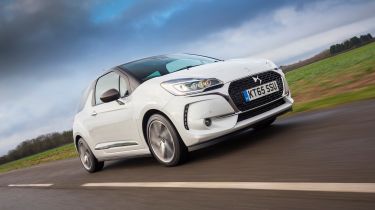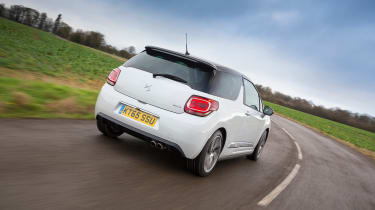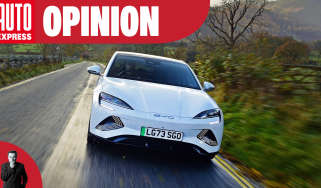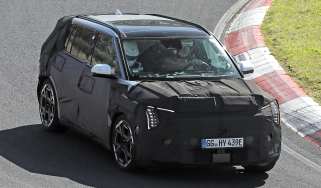DS 3 (2009-2019) review - MPG, CO2 and Running Costs
Strong fuel economy across the board equals low CO2. Insurance groups are a bit high on more powerful versions

The DS 3’s engine range really delivers when it comes to fuel economy. It’s the 1.2-litre PureTech engines that are the real standouts – every single version, be it 82PS or 110PS power output, five-speed manual or four-speed automatic, averages over 60mpg on the older NEDC test cycle (as the DS 3 is being discontinued, it hasn't been tested to the new WLTP test procedure, which was introduced in 2019). This is extremely impressive and combined with CO2 emissions of less than 107g/km.
The more powerful 1.6-litre THP 165 is thirstier, but even its claimed average of 50.4mpg is impressive considering its performance, while the 204bhp version isn't much worse. Like all DS 3 engines apart from the basic PureTech 82, this motor gets S&S engine stop-start as standard, which helps cut fuel consumption and emissions in stop-start traffic.
If the petrol engines are good, the 1.6-litre BlueHDi diesels take things to another level. The BlueHDi 100 will return 83.1mpg on the combined cycle, and even in town it claims 74.3mpg. This is combined with CO2 emissions of 87g/km.
The faster BlueHDi 120 averages 78.5mpg and emits 94g/km, although it’s worth noting that this engine gets a six-speed manual gearbox, compared to the BlueHDi 100’s five-speed. If you do a lot of motorway miles, it will be worth taking the more powerful engine – proven by the official figures, which give both engines the same 88.3mpg claimed economy on the extra-urban mpg test.
Insurance groups
Insurance groups for the DS 3 are a little high, considering the fact it’s a small supermini-sized car. It’s worth bearing this in mind when you’re shopping for one, particularly if you’re taking on one of the sportier engines.
Used - available now
The basic 1.2 PureTech 82 DSign comes in at group 10E insurance, and the DStyle step-up lists this by just a single group to 11E. However, it seems adding a turbo on quickly inflates DS 3 insurance costs. The PureTech 110 DStyle is an alarming group 19A – it’s an affordable £1,200 more expensive but the insurance cost hike could make it unviable for some.
Diesel insurance groups start at 22D, with the BlueHDi 120 pushing it up to 24A. Naturally, the sporty THP 165 versions are the most expensive to unsure; group 26E or 27E for the posh Ultra Prestige. Also note that some of the special editions will cost more to insure than the regular models they’re based upon.
Depreciation
The DS 3 is a stylish and popular model that sells well both new and used. This means it is an in-demand car, which helps keep depreciation in check.
It’s not quite as strong here as the MINI Hatch and Audi A1, but it’s still a much stronger performer than the mainstream Citroen range. Just keep the trims sensible – all DS 3 get the stylish, upmarket looks, while the expensive range-toppers are a better buy used than they were new.







